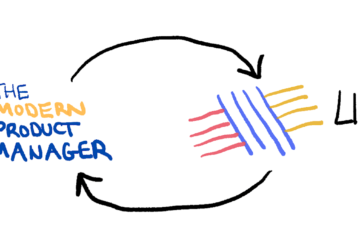In my previous post, I introduced the four different flavours of product manager, depicted by the PM quadrants matrix: https://chrismiles.co/four-flavours-of-product-manager/
As the name suggests, the PM quadrants are four sections, depicted on a 2×2 graph. It shows the four flavours of product manager based on the relative importance of a discovery versus a delivery focus compared to the relative importance of business versus technical skills.

That’s the matrix recapped. Now to talk about the skills and responsibilities of each of the quadrants.
Core skills
There are a set of four key skills that apply to all of the quadrants and that I consider core skills for all product managers. The first of these, which I recently found to be the most important in a study of product professionals, is communication skills.
The second is problem-solving. No matter the quadrant you are operating in as a product manager, you will have to be a logical, structured and pragmatic thinker that can turn problems and opportunities into tangible outputs.
Stakeholder management is important across all quadrants too. The stakeholders you deal with will change (e.g. a PMM or Strategic PM is more likely to deal with users, and a Technical PM is more likely to deal with a solution architect or DevOps engineer), but it is extremely important for all.
The final core attribute/skill I will mention is empathy. Any type of product manager needs to be able to put themselves in the shoes of the user as well as all of their stakeholders. It’s a non-negotiable for me, that a product manager must have emotional intelligence.
With a set of four core skills identified, I’ll now break down the skills specific to each quadrant. Of the skills listed, it is not to say that they do not also apply to other quadrants, but that the relative importance is particularly high for that role.
Skills for a technical product manager
The technical product manager is essentially a variant of the product owner, which I will outline next. They still have a focus on delivery but the role requires more technical expertise.
They must:
- Have an understanding of the technical architecture of the product.
- Be up to date with technological trends in the industry and beyond.
- Have an ability to consider future implications of technology decisions.
- Be able to challenge and push back on business requirements using technical knowledge.
- Use technical knowledge to solve business problems.
I am not one to require specific backgrounds or degrees for product managers, but those that fall into this box are more likely to have a computer science or engineering background than those in the other quadrants.
Skills for a Product Owner
As the role of a product owner is set out in the Scrum Guide, it is the easiest to define.
First and foremost, the product owner is responsible for managing the product backlog. Concerning the product backlog, they must:
- Express Product Backlog items clearly.
- Order the items in the Product Backlog to best achieve goals and missions.
- Optimise the value of the work that the Scrum Team performs.
- Ensure that the Product Backlog is visible, transparent and clear to all, and shows what the Scrum Team will work on next.
- Ensure the Development Team understands items in the Product Backlog to the level needed.
Additionally, the product owner must have:
- A deep understanding of agile methodologies in practice.
- The ability to translate business asks into workable user stories.
- Some understanding of technical architecture including APIs.
- A willingness to optimise how the team works.
While the product owner role is explicitly defined and included in Scrum, that does not mean it cannot exist following other agile frameworks, just that it is easiest to define when aligned to Scrum.
Skills for a Product Marketing Manager
While product management is the intersection between the user (represented by design), the development team and the business, product marketing is the intersection between sales, marketing, and product.

They must:
- Have a deep knowledge of the current and target customer, through research
- Be analytical and enable to define and track KPIs
- Have knowledge of marketing and sales tools
- Understand campaign management (usually including SEO knowledge)
- Create Go-To-Market plans for the product
- Create communications plans for product launches
- Create and deliver training on the product to sales and marketing teams
Skills for a strategic product manager
With a high business and commercial acumen and a view to the future, the Strategic PM is responsible for conducting a range of research to determine the product vision, strategy and roadmap. Their skillset allows them to maintain oversight across the product and align everyone around a common goal.
They must:
- Analyse internal data
- Conduct external research
- Determine the vision and strategy for the product
- Align all internal stakeholders towards the same vision
- Convert the agreed strategy into a deliverable roadmap
- Develop business cases to obtain funding when needed

The quadrants and their skillsets
So here it is, the 4 PM quadrants with the top skills of each mapped on the matrix, along with those all-important core skills in the middle.

I’ve pulled out an example job description for each quadrant to give an idea of what one looks like in the real world. The four job descriptions are for an aviation start-up, a gaming platform, a social media platform and a product consultancy and I’ve paraphrased them in the interest of brevity.

You will notice from the role requirements that none of them fit perfectly into the definition of that quadrant, and in fact, all of them include elements that I see as outside of the remit of a product manager.
In my next post I will cover what is not in the product manager’s remit and therefore how you can determine if you are really a product manager or not.
In the meantime, have I missed any core skills or skills relevant to the specific quadrants? Let me know!
Originally posted at: https://chrismiles.co/what-is-each-flavour-of-product-manager-responsible-for/



0 Comments